Newsletter
Only good movies
Get the Indie Focus newsletter, Mark Olsen's weekly guide to the world of cinema.
You may occasionally receive promotional content from the Los Angeles Times.
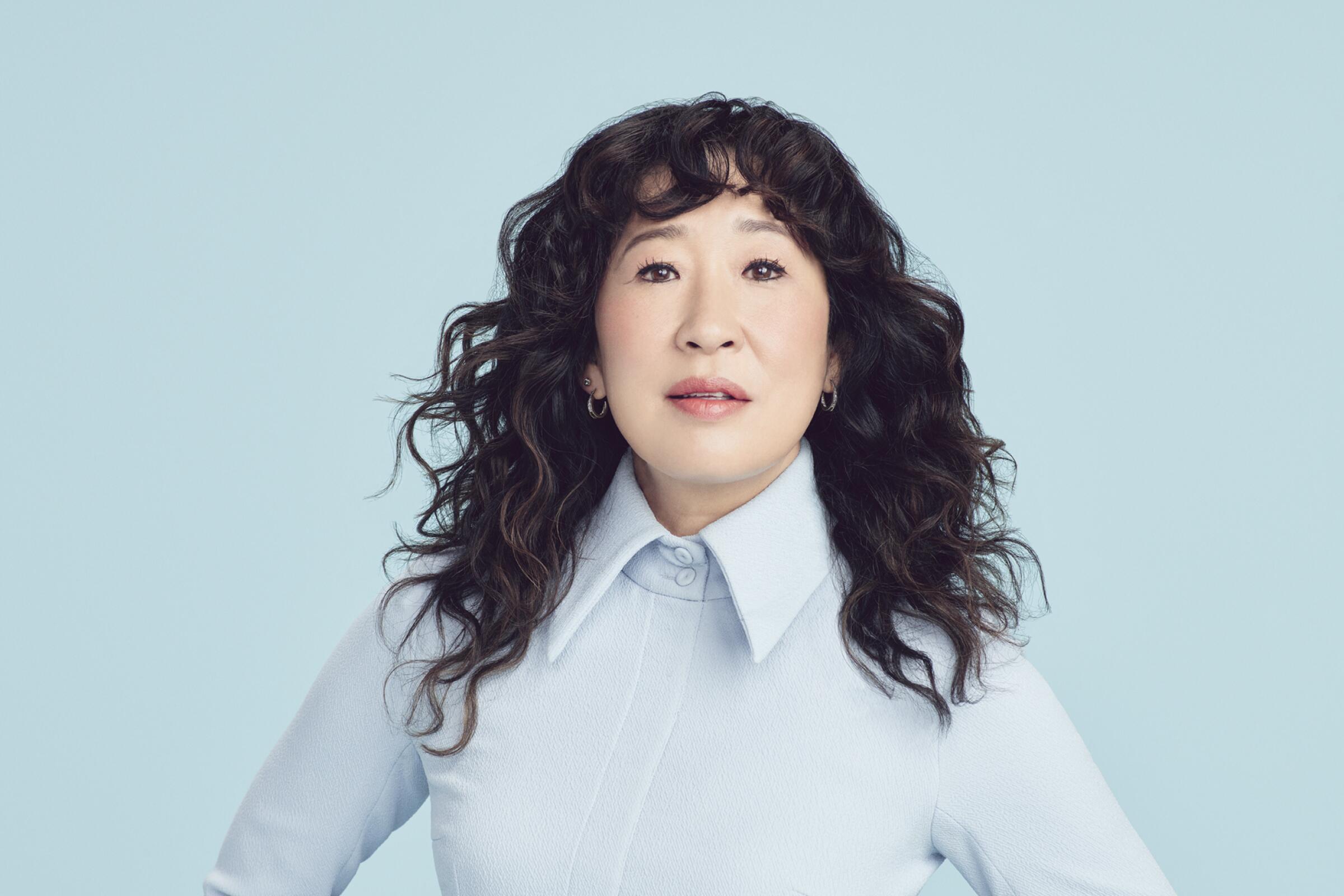
Sandra Oh didn’t plan it this way, but she’s spent 2022 so far helping Asian American audiences heal at the movies playing mothers learning to loosen up in their love.
In Pixar’s animated hit “Turning Red,” streaming on Disney+, Oh voices Ming Lee, the overprotective mom of precocious 13-year-old Meilin (Rosalie Chiang) whose coming of age coincides with her out-of-control ability to turn into a giant red panda.
For the horror crowd, Oh also stars in supernatural thriller “Umma” (out now on VOD) as Amanda, a Korean American woman living happily in seclusion with her teenage daughter Chris (Fivel Stewart) on a remote bee farm — until the ghost of her own recently departed mother comes calling.
“I relate very much to both of the daughters who have to emancipate themselves!” said Oh recently in a Zoom chat from her home in Los Angeles. “But the tricky thing is to still be connected to our mothers as no matter what we all do, whether we want to or not, we are so profoundly connected to our parents — even if they are not present in our lives or physically there.”
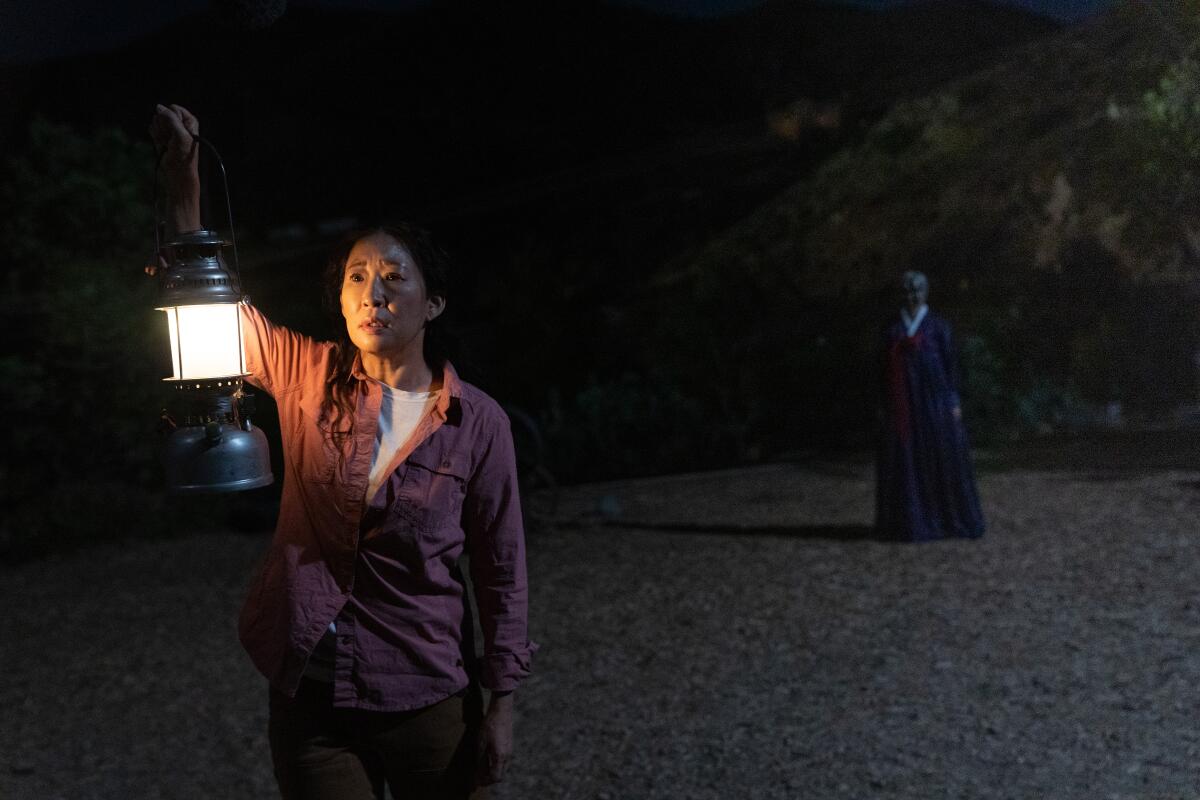
While “Turning Red” and “Umma” tell uniquely distinct tales of mothers learning to understand their daughters — and in turn, themselves — Oh’s journeys with the projects overlapped in unexpected ways.
Working with “Umma” debut writer-director Iris K. Shim in 2019, Oh began crafting her character, Amanda, whose painful past with her estranged Korean mother, a.k.a. Umma (MeeWha Alana Lee), has led her to create her own rural life in America, largely oblivious to her daughter’s burgeoning desire for independence.
Days before the pandemic shut everything down in March 2020, Oh flew to Pixar in Northern California to meet with “Turning Red” director Domee Shi, co-writer Julia Cho and producer Lindsey Collins. “I went up there to get that job and the world changed,” said Oh.
‘Asian Enough’ podcast hosts Jen Yamato and Tracy Brown share excerpts from a recent episode featuring actor Sandra Oh.
After COVID-19 threw the schedule for the Sam Raimi-produced “Umma” into flux, she recorded her “Turning Red” role in a makeshift booth set up in her home. Last year, while in Pittsburgh filming Netflix comedy series “The Chair” — in which she stars as a professor also occupying the intergenerational nexus between an immigrant grandparent and younger child — she gave an impromptu speech at a “Stop Asian Hate” rally that went viral.
Oh Zoomed in to take a closer look at the common themes that subconsciously drew her to these recent projects, why her parents will probably avoid watching “Umma” and the special thrills those “Turning Red” convenience store scenes brought the former Torontonian.
“Umma” is centered around a concept that’s particularly frightening and relatable to many: the fear of turning into your own mother.
It’s visceral! One of the big themes that Iris [K. Shim] and I were really interested in exploring was intergenerational trauma. The trauma through and post-immigration, and how when one does not deal with their history and also trauma, you inevitably will repeat it.
And further — how do we break that chain? In some ways, it might even be easier for your character Amanda to do that for her daughter, rather than for herself.
Exactly. There’s also a specifically Asian American, very complicated loyalty bind — definitely in “Umma,” but also in “Turning Red” — that I think many of us get into and have to pass through, if we have been able to have good relationships with our parents. There is so much love there and so much expectation. And it’s difficult for us to translate to other people who might not grow up in the same culture how difficult it is to say “no” or to disappoint our parents. It’s our own specific struggle.
One of the images that I love the most that actually brought me to tears seeing “Turning Red” was when Meilin as a panda was trying to leave the temple, and her mother, her father, grandma and all her aunties are trying to pull her back in.
Back into safety.
It’s like when everyone you love who you know loves you is trying to keep you safe, and you know all these things but you need to break away. You need to follow your own panda. These metaphors! It’s very clear that, say in “Umma,” Chris very classically wants to go to school and needs to find her independence. And Amanda has set up the way that they’re going to just live together, the rest of their lives, on a bee farm! [Laughs] It’s like it was fun for a while, but now Chris needs to separate.
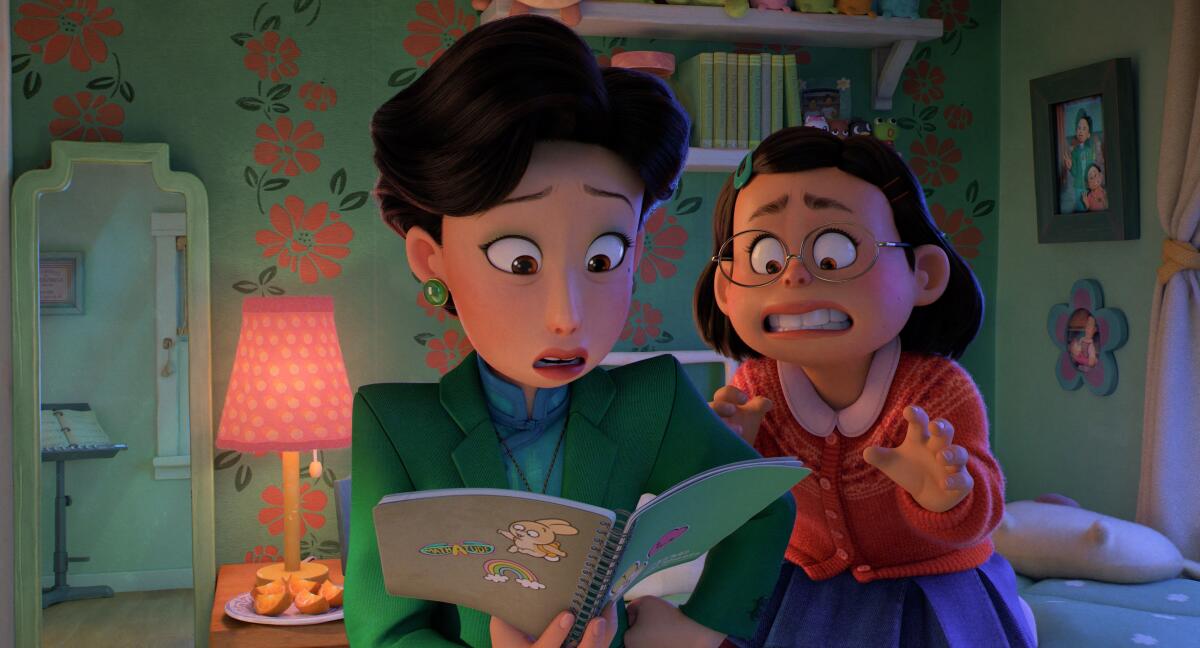
Watching “Umma” I wondered: Why did it take you so long to star in a horror movie?
Why? Because no one’s asked me to! I appreciate the question. I’ve been solidly on television for like 20 years and that takes up a lot of time and I’m just busy making a living. But I am so interested in genre.
So how did “Umma” make its way to you?
The script came to me first. Obviously, I was familiar with Sam [Raimi]’s company, and again, it’s meeting a young, passionate Asian American female filmmaker who says, “This is what I wrote. This is what I want to explore. Would you help interpret it?” Iris and I were on the same page of using genre to explore unexplored areas in the Asian American psyche. I was very interested in that. What have we not dealt with?
And what was that unexplored terrain?
We very much invoked own personal ancestors. We had this little table [on set] that was like a shrine, and we invited all the crew to bring in whatever image, whatever symbol of their ancestors to put on it. Because [“Umma”] is all about, in some ways, honoring our ancestors. We’re also dealing in a very mysterious, powerful, energetic world. In that space of creativity where you’re talking about unexamined trauma, horror and violence, you need protection. Because when you call on those forces to examine them, you need an equal protection to help you move through that. That was our table. Every morning before I went to set, I would absolutely bow to it.
Did you bring your own tokens to that table?
Oh yeah, my family. It’s about humility — “Please protect us.” It was also the height of COVID-19. No one got sick. In places where you can’t understand what’s happening, and people are all under threat, let us move to the forces that are greater than ourselves and trust them and say, “Please guide over us.” It was also a way to keep the whole set and the cast involved in the same movie. This is about our ancestors. This is about revealing our unspooling trauma, in this genre.
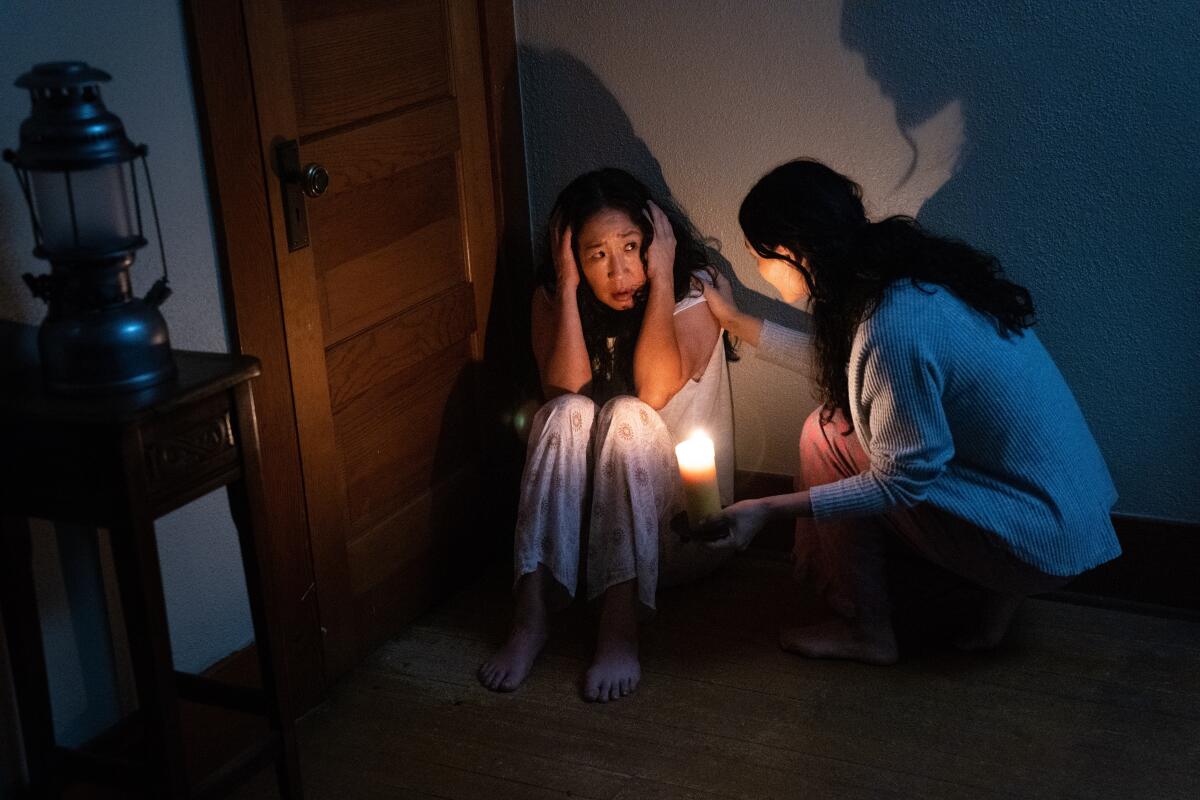
The film integrates traditions such as Umma’s tal mask and the ancestral jesa ceremony that are culturally specific but legible to a wide audience. Were you familiar yourself with those traditions?
Both Iris and I grew up in Christian households, so I think she would do jesa for ancestors, but we would do jesa basically on New Year’s. I think everyone does that one. And then for those symbols of the tal and the hanbok, I think in a very typical immigrant first generation, you do those things or you dress up in hanboks when you’re a kid. In 2018 when I brought my parents to the Emmys, mom was like, “I want a hanbok. I want something really beautiful,” and I got this beautiful hanbok made for her. There is a lot of power in that dress.
These are very different stories and characters, but there is an interesting common thread between “Umma” and “Turning Red” in that your characters are in the middle of a multigenerational family between their own more traditional parents and their diaspora-born children.
The three creators are all women. Iris Shim is Korean American and Domee Shi is Chinese Canadian and Julia Cho, Korean American. And it is that lens that I’m interested in. I thought something interesting was going on, because [the creatives] approaching me are young female filmmakers who have written their own stuff. It’s like the first story in some ways is about “mother.” You could see that in some ways 20-plus years ago with “Joy Luck Club,” right? I was like, here are these millennial women and they want to tell the story about mother-daughter, but basically about mother. And I was really interested in that.
You worked closely with your onscreen daughter, Fivel Stewart, on “Umma.” Did you then have much opportunity to bond with your onscreen daughter Rosalie Chiang for “Turning Red”?
No. Isn’t that wild? That speaks so highly to Domee Shi’s direction and to Domee and Julia’s script. Domee is such a great director because she knows what she wants. She could hear it. You would do a line over and over again and she would just need to hear it for her to get that relationship that she is very intricately creating, because I don’t know who recorded first. It’s not like she’s carrying some tape that Rosalie has done and matching it with what I’m doing on a completely different day.
Especially since the nuanced and complicated emotions between mother and daughter are so central to “Turning Red.”
Yes. I think it speaks to who she found in Rosalie Chiang, how she calibrated her performance. The idea of bringing out emotion and bringing out sadness — Meilin goes through every single emotion. I love it because it’s such a beautiful, nuanced performance. And you know, you’ve been a girl. We have all our feelings.
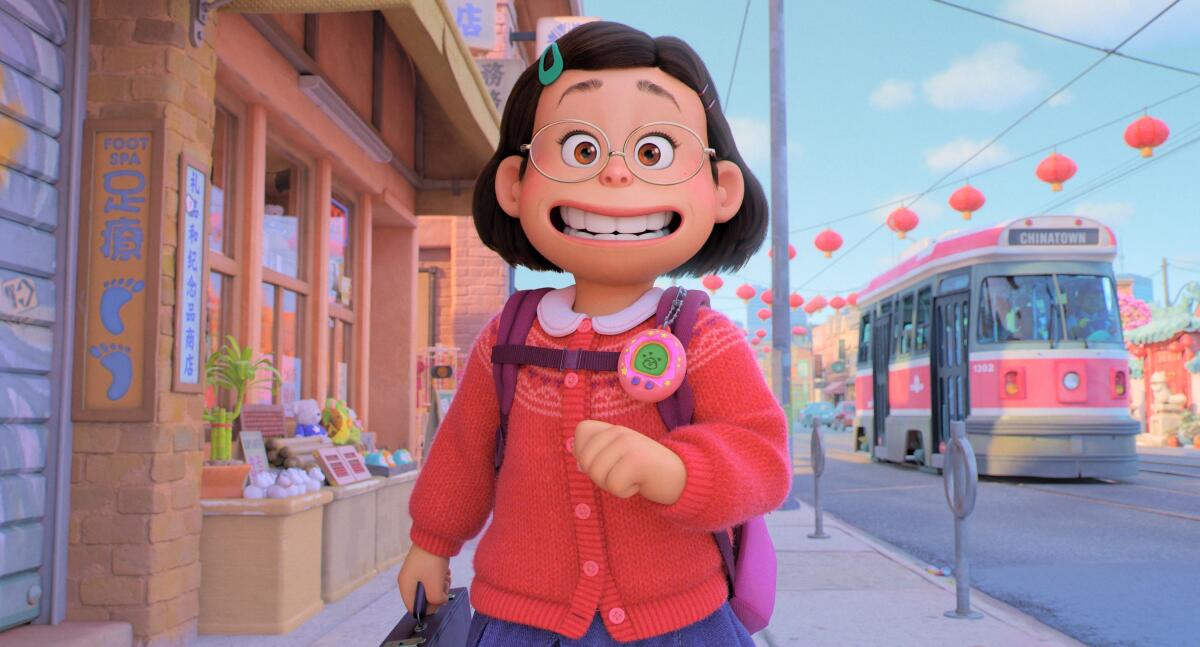
The idea that the specific is universal applies to “Umma” and “Turning Red” in different but vivid ways. What are the hyperspecific details in each of these films that brought their worlds to life for you?
Near the start of “Turning Red,” Meilin starts fantasizing about this young man who works at the Daisy Mart — and I used to live around the corner from Daisy Mart. They’re very rare! I’ve never seen a Daisy Mart outside of Toronto. What I love about that is the specificity, because most everyone has grown up near a corner store where all those kids are hanging out. Also, the way that [Shi] drew the pressure of all the kids looking at Meilin as her mom was dragging her up to the counter before she was humiliated is that beautiful specificity of place and of emotion — of the “ha-ha,” and the horror of that.
In “Umma,” the specificity was really in my relationship with Fivel [Stewart]. We met and worked together prepandemic, doing our own personal creative work of really getting a bond together. I felt very comfortable with her body, and that was very specific because I think to be able to create that trust with another actor is very important. What we wanted to portray is that there was no difference between us, that Amanda felt that her child is an extension [of herself].
What you hopefully get is a believable relationship between a mother and a daughter where Iris was specific that we physically looked alike, that we were close to each other’s height, that our hair is quite similar, that our body types were very similar. There was a lot of doubling with that that we wanted to do as well.
In an interview on the “They Call Us Bruce” podcast, Iris said that her mom still hasn’t seen “Umma” — and she’s not sure if she wants her to. Has yours?
I don’t think that my mom would! It’s too tense, this film. My dad might watch it. But I was on a show in the ‘90s and the ‘00s called “Arliss” on early HBO, and there was swearing on that show, and they were like ... no. But I’ll tell you this: My mom and my dad helped me with my Korean [on “Umma”], as they also did on “The Chair.” I have a very, very, very basic understanding of certain things, but I feel also comfortable with it so if I know what the dialogue is, I will be able to pick that up. But the actual practice of being able to speak it was very different.
It was a wonderful thing to share. And when I was doing work on my own ancestors, I had to talk to them. My parents are elderly now and their stories are going to leave us and the history and the mystery is going to leave us. But I also realized through the film that their presence never leaves us. We just need to call on it. Like with all beings who leave us in this material world, it’s your choice how you want to still connect with them.
It’s been a year since you gave a moving speech in Pittsburgh at a “Stop Asian Hate” rally. How has this last year reinforced for you the message that you shared then?
It’s interesting that all these things that I was making during that time happen to be overlapping at this moment. How I see the past year, or how I see, at least, my place in where we are as an AAPI community, is that the more that we are able to [create] storytelling, the more that children see themselves and their neighbor, this is a long game. We’re talking long game because it’s only generational.
The work that I do as a storyteller is to either maybe speak to the people who hate already or who are frightened already, but really speak to the next generation — the generation who sees psychological horror and also the generation that sees Pixar movies. Because to see ourselves is to bolster our own internal strength. So when the inevitability of life happens to us, we have another layer of strength knowing that we are not alone.
Only good movies
Get the Indie Focus newsletter, Mark Olsen's weekly guide to the world of cinema.
You may occasionally receive promotional content from the Los Angeles Times.